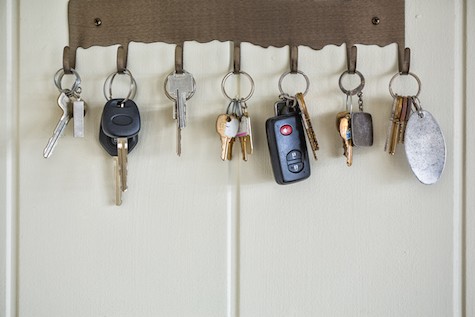The quick guide to redrawing on your home loan
If you have a redraw facility on your home loan, you have the ability to access money you’ve paid above your minimum monthly repayments.

Many home loans have a redraw facility, or redraw feature as it’s also known. It’s often a popular way to pay more money off your mortgage, while giving you the option of being able to use any additional funds you may have paid on top of your normal repayments for other purposes.
How does a home loan redraw facility work?
If you have a redraw facility, you can access extra repayments you might have made on top of your minimum repayments by transferring money to other accounts you hold with your bank.
Depending on your lender, you may be able to use these funds to make payments via BPay, or you could transfer it to accounts you hold with other providers.
You may also be able to access extra funds via an ATM or EFTPOS if you have a card attached to your home loan. Additionally, you may be able to set up direct debits on your home loan to access these excess funds.
The word extra is key here, as redrawing excess funds applies only to payments you make above the amount you’re scheduled to pay. For example, if your minimum monthly mortgage repayments are $2,500 and in one month you repay $4,000, you can redraw the extra $1,500 in the future.
Why have a home loan account with a redraw facility?
If you want to reduce your loan amount as quickly as possible, you can place all your excess funds into your home loan, knowing that if you need to access funds at some point in the future, you’ll be able to withdraw what you’ve paid on top of your minimum repayments via the redraw feature.
This may provide some peace of mind should a financial emergency arise, or something else, such as a business idea that you may need money for.
What is the difference between a redraw facility and an offset account?
While a redraw facility and an offset account can both help you to reduce the interest you pay over the life of your loan, they are two different things.
Offset accounts are transaction accounts, giving you easy access to your money, whereas redraw facilities let you access extra repayments that you have made out of your home loan.
The pros and cons of redraw facilities
Pros
- You can contribute extra funds into your home loan when you’re able to, which can be a useful way to save, while also giving you access to this money should you need it later on.
- Knowing you can access these funds may mean you’re more inclined to contribute above your scheduled repayments, which could see you pay less in interest over the life of your loan and even reduce your loan term if you don’t have to withdraw these excess funds.
- Using available funds via a redraw facility, rather than taking an alternative approach such as applying for a new loan, or credit card, may be easier and potentially have fewer costs.
Cons
- Rules around redraw facilities are not the same across all lenders. For instance, some lenders might provide access to these excess funds the same way you would access funds from a transaction or offset account, while others may limit how you can move your money. You may be limited to only being able to transfer money to other accounts you hold with the same bank.
- Not all providers offer a redraw as a free home loan feature, so it’s worth checking what costs may apply should you want to access excess funds in the future. While it may be free to do via internet banking, some offer a certain number of free transactions per month before charging a fee for additional redraw transactions (which they may, or may not, let you do via things like BPay or a bank card that you may have tied to your home loan account).
- If at any time you don’t make your minimum monthly repayment, your available redraw will reduce by the amount you were unable to pay. Your provider may allow you to use redraw for this purpose however make sure you double check as all lenders have different rules.
Talk to an expert
It’s important to understand exactly how you can and can’t use a redraw facility, particularly if it’s an important feature when shopping around for the home loan that’s right for you.
Talk to your lender or speak to us about the advantages and disadvantages, and where costs may apply.